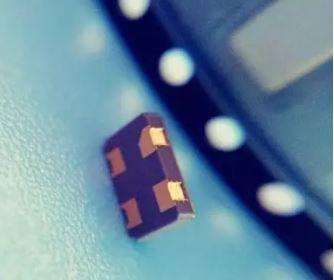Active crystal oscillators are usually four-pin or more-pin. The built-in start-up chip is a complete oscillator. It can be started as long as the power is turned on. The main class is called active components. The passive crystal's pin is usually four feet below four legs. Its working principle is to connect the crystal oscillator to both ends of an inverting amplifier. Then two capacitors are respectively connected to the two ends of the crystal oscillator. The other end is grounded again. The capacitance value of the two capacitors in series is equal to the load capacitance. Please note that the pins of the general IC have equivalent input capacitance, which cannot be ignored.

The frequency output of the active crystal must have a certain waveform as the output carrier, and the output of the waveform must also be accompanied by a certain load value. In practical applications, the waveform load is also a very important parameter target for the crystal. If the selection is not appropriate, it will cause the crystal oscillator or other modules to work abnormally, and the function cannot be completed, and the module or even the whole machine will be damaged. 80% of engineers using the oscilloscope to test the active crystal waveform will have the following misconceptions: passive crystal output sine wave, active crystal output sine wave or square wave. If the active crystal oscillator does the shaping circuit (Schmidt shaping) in the active crystal oscillator, the output is a square wave. But in many cases, the osine wave is not very good on the oscilloscope. This is because the bandwidth of the oscilloscope is not enough. Because the Fourier decomposition of the square wave is the superposition of the fundamental frequency and the odd harmonic, if the bandwidth is not enough, the height is high. The frequency square wave is easy to see as a sine wave. Since you can only see its low frequency harmonic components, a sine wave is displayed. A perfect reproduction of a square wave requires at least 10 times the bandwidth, and 5 times the bandwidth is only barely. (For example, a crystal oscillator with a frequency of 60M, an oscilloscope that requires at least 300M). There may also be a problem with the load. The probe can be adjusted to *10.
There are three main types of crystal oscillator output waveforms: sine, square, and quasi-sine.
There are several types of crystal load:
1. Sine wave: load 50 ohms or 1 k ohms;
2, square wave: N TTL load or N PF capacitors;
3, quasi-sine wave: 10K ohms parallel 10PF capacitor.
The oscilloscope needs to pay attention to the following four points when measuring the waveform of the active crystal oscillator.
First, an oscilloscope with a sufficiently high frequency is required to be 200 MHz or more.
Second, it is best to find the frequency output detection point according to the chip used by the board, because the high-frequency crystal oscillator itself has a very small amplitude of oscillation, and the link of the external circuit may cause the vibration or frequency to change.
Third, you need to ensure that the probe impedance is large enough.
4. When the above conditions are met, the probe clip can be connected to the common ground wire. When the probe touches the crystal oscillator after the start-up, the crystal waveform can be seen.
The use of crystal oscillators is very wide, and the requirements for different products are different. In the past few years, the crystal industry has changed not only with the emergence of various smart products, but also to meet the market needs of the electronics industry. From the previous large-volume plug-ins to today's ultra-small ultra-thin patch crystals, the precision is getting smaller and smaller, making the product more stable

No comments:
Post a Comment